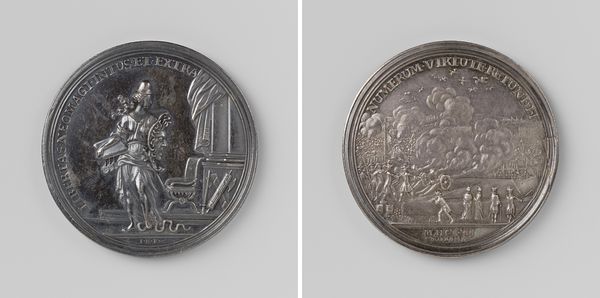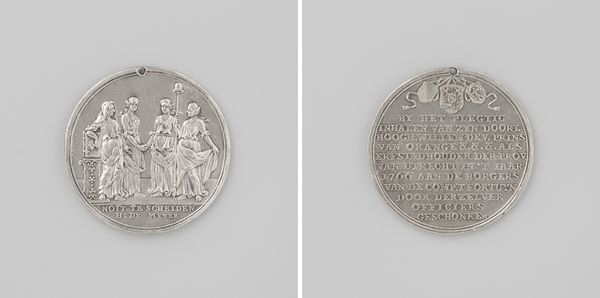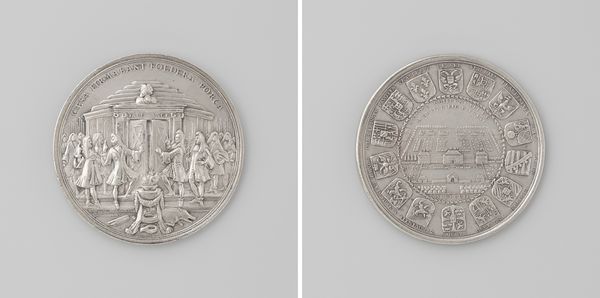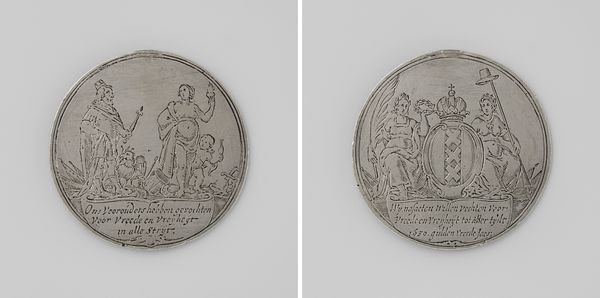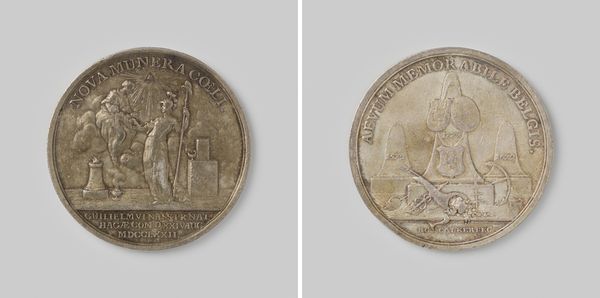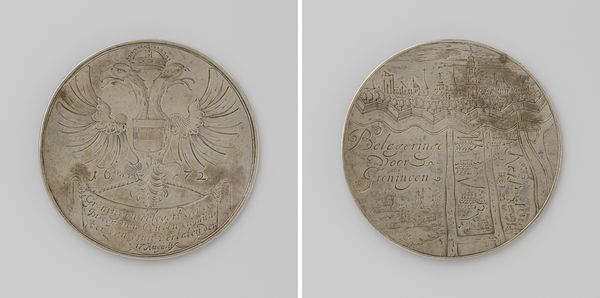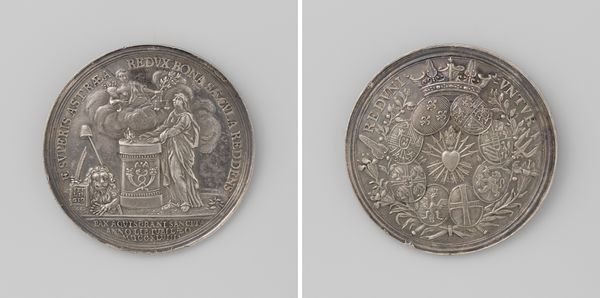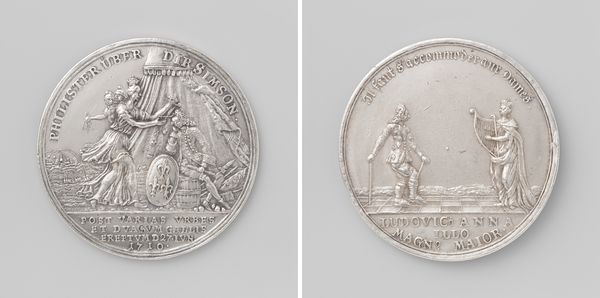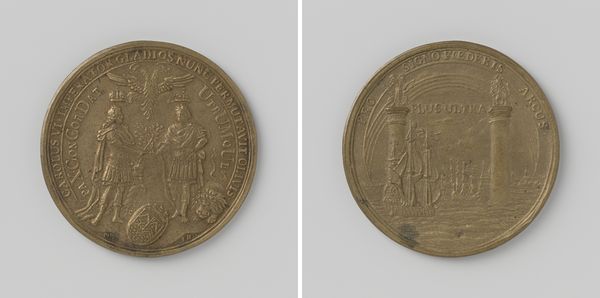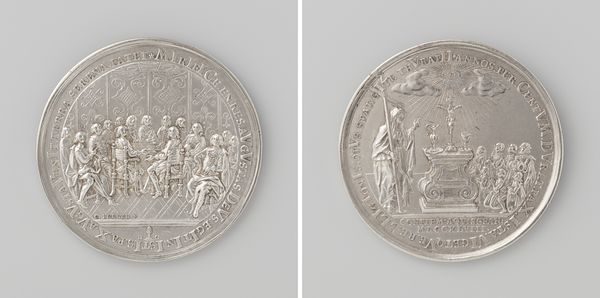
Inwijding van de Roomskatholieke kerk te Rijsenburg, gesticht door Petrus Judocus van Oosthuysen en Margaretha de Jongh, Heer en Vrouwe van Rijsenburgh 1810
0:00
0:00
metal, engraving
#
neoclacissism
#
metal
#
old engraving style
#
woodcut effect
#
linocut print
#
history-painting
#
engraving
Dimensions: diameter 4 cm, weight 187 gr
Copyright: Rijks Museum: Open Domain
Curator: Immediately, the fine detail suggests tremendous skill. It possesses a certain crispness in its lines despite the likely softness of the original metal. Editor: You're observing "Inwijding van de Roomskatholieke kerk te Rijsenburg," a metal engraving crafted in 1810 by G. Klouzing. It commemorates the consecration of the church founded by Petrus Judocus van Oosthuysen and Margaretha de Jongh. Curator: Commemorative pieces often follow certain patterns in Neoclassicism. Note the figure, draped elegantly with her careful positioning and the urn, rendered to an extremely refined degree. Her lines point the eye directly towards the building and back again, making an immediate impact on any observer. Editor: These medals served an essential role in propagating particular narratives. This piece is less a religious devotional object than an assertion of social standing—it immortalizes the founders' names and lineage tied into the place itself. The founding patrons, Van Oosthuysen and De Jongh are given as much symbolic importance as any deity or patron saint might be granted within other contexts, religious or secular. Curator: Look at the symmetry! The design seems determined to give as much importance to the lettering as it does to symbolic meaning behind the primary composition. It feels as though this might not only honor, but it may codify a social order? Editor: Absolutely. The very act of creating and distributing such medals reinforces their authority and enshrines them within the collective memory of Rijsenburg. Think of the implications, though—consider the population it fails to memorialize or chooses to exclude completely. Curator: The line quality definitely gives it away: This artist wanted to give the viewer as much important information about what went into designing and building it as possible through clear images that represent important objects such as buildings associated to a time in this families life as its founders, versus others that remain only the name or date listed below the depiction. Editor: Examining it within its socio-political context illuminates a broader narrative, as this small metal piece demonstrates art's ability to solidify and disseminate power structures in the 19th century. Curator: Precisely. By appreciating this small token in totality, the artist gives his or her respect due not only from one family during particular year, or an building that served specific purposes while honoring those involved. Rather, to showcase society while helping those remember important figures that went into construction that helps it become meaningful now and ever forward after them.
Comments
No comments
Be the first to comment and join the conversation on the ultimate creative platform.
